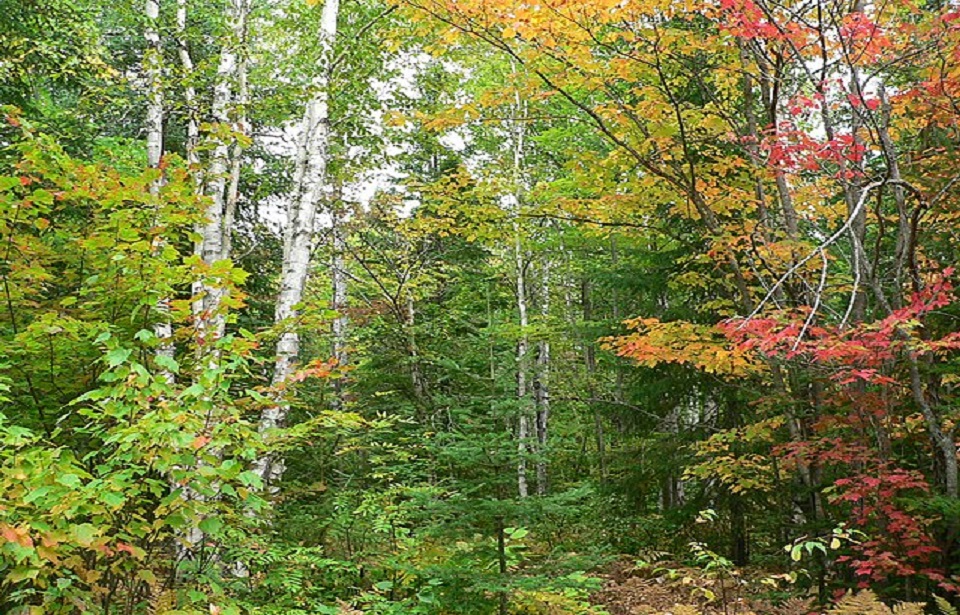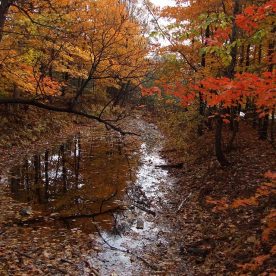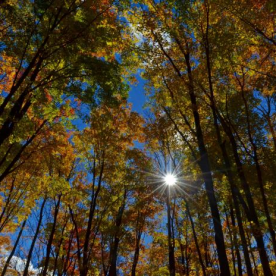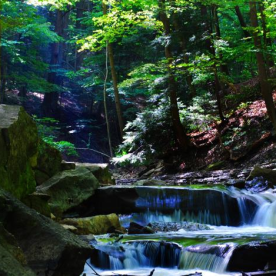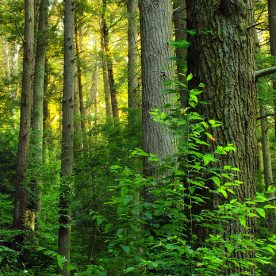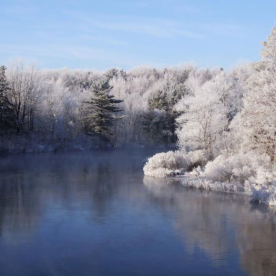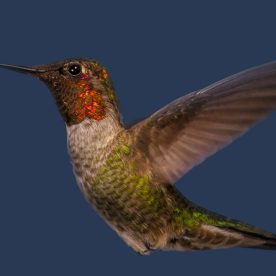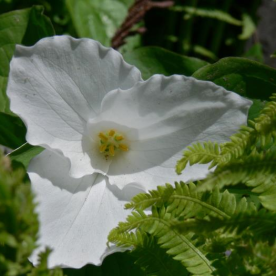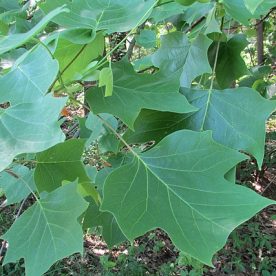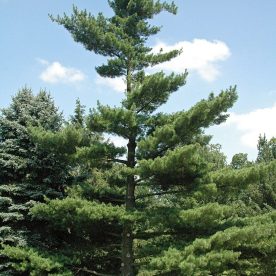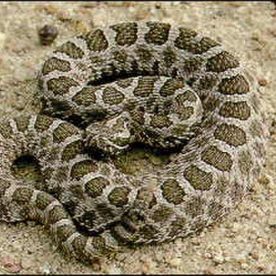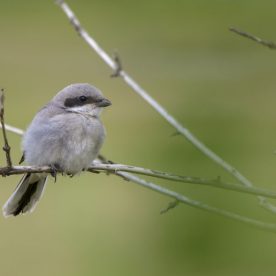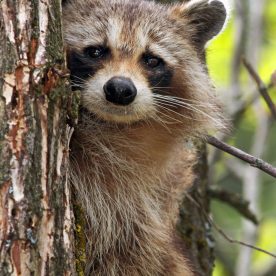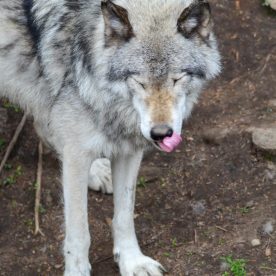• Canada’s most populated ecozone
• Canada’s smallest terrestrial ecozone
• Home to half of Canada’s threatened or endangered species
• Has the highest tree diversity in Canada
DESCRIPTION
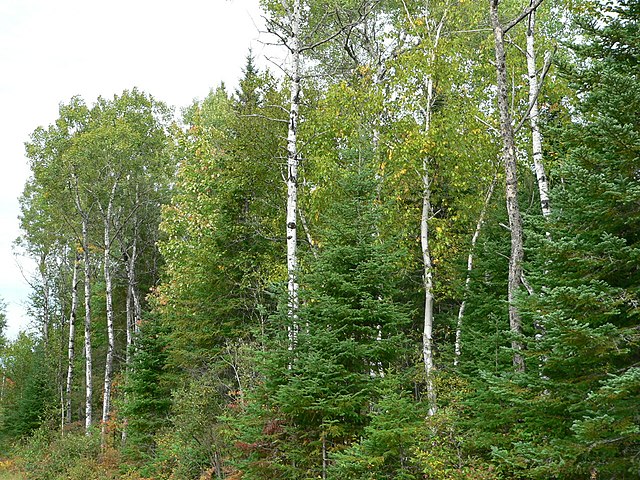 Credit: Daniel Dumais Credit: Daniel Dumais |
| Mixed Woods Forest |
The Mixed Wood Plains of Southern Ontario and Quebec is one of Canada’s smallest recognized ecozones. It is bordered by the boreal forests to the north and the Atlantic Maritimes ecozone to the east. Despite covering less then 10 per cent of Ontario, it is one of the most populated regions of Canada, with large urban centres and abundant agricultural production. This ecozone is defined by its temperate broadleaf and mixed forests, which describes a moderate climate and a mixture of both coniferous (evergreen) and deciduous (broadleaf) trees.
The Mixed Wood Plains contain a large amount of freshwater, being surrounded by the Great Lakes and St. Lawrence river. These large bodies of water moderate the weather, providing warmer winters and cooler summers then other parts of Canada. Winters are cool with average temperatures ranging from -3 C to -12 C and summers are warm with temperatures between 18 and 22 C. Precipitation – both rain and snow – amounts to around 72 to 100 centimetres per year.
Within the Mixed Wood Plains, plenty of smaller unique ecosystems exist in addition to the forests. Below is brief explanation of each type and where you might find it.
Alvers: Limestone bedrock with very little soil creates an ecosystem that contains sparse vegetation and very few trees. The open area creates unique habitat used for nesting by some species of birds, such as Loggerhead Shrikes. Alvars are very rare but exist on parts of Manitoulin Island and in the Carden Plains.
Tall Grass Prairies: Ecosystems to the south of the Mixed Wood Plains region that are composed of diverse grasses and wildflowers. One of the most endangered habitats in Canada, and home to the Northern Bobwhite quail.
Savanna: Similar to the tall grass prairies, these ecosystems are dominated by grasses and wildflowers. Due to less stressors however, trees also exist in this landscape. Oak and hickory savannas can be found in Toronto’s High Park as well Turkey Point Park and Pinery Provincial Park.
Wetlands: These ecosystems are defined by their permanently waterlogged soil, and four distinct types occur in the mixed wood plains.
Swamps: Wetland that is dominated by trees – often a transition zone between bodies of water and land.
Marshes: In contrast to swamps, these wetlands often open stretches of water and contain larger communities of herbaceous plants like water lilies and cattails.
Bogs: Wetland that accumulates a large deposit of dead plant material known as peat. Bogs are very acidic and nutrient poor, which has given rise to unique plant communities that have adapted to the difficult conditions.
Fens: Very similar to bogs, except they are less acidic as they are fed by surface and groundwater in addition to rain.
Rivers: Numerous rivers flow throughout the mixed wood plains creating unique ecosystems and providing habitat for aquatic animals like Beavers, Blue Herons, mussels, turtles, frogs and fish.
Lakes: In addition to the Great Lakes, many smaller lakes exist throughout the Mixed Wood Plains, and provide habitat for fish and other aquatic animals and plants.
Shoreline: Transition zones between waterbodies and land often have a great diversity of animal and plant life. Sandy shorelines with dunes often have unique plant species found nowhere else, and shoreline birds like the Piping Plover are Endangered in Canada.
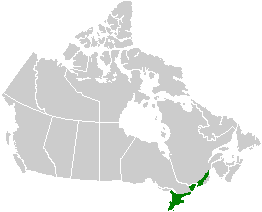 Credit: Environment Canada, Environnement Canada Credit: Environment Canada, Environnement Canada |
| Mixed Woods Forest Ecozone in Canada |
GEOLOGY & GEOLOGICAL HISTORY
The geology and geological history are the fundamental building blocks of ecosystems. Geology influences the types and structure of plant communities that can inhabit an area, which in turn impacts the wildlife that can live there. Geological features can create unique ecosystems (like escarpments) or fracture existing landscapes giving rise to new species (like a waterfall separating downstream environments from upstream environments).
The Mixed Wood Plain ecozone is built up on limestone and dolostone bedrock. The most recent geological event to impact this region is the retreat of a continental ice shelf 11,000 years ago. The movement of ice across the landscape left behind many of the features we see today.
Drumlins and moraines are both hill features that are left behind by the melting ice sheet and composed of rocks of various sizes that were swept up in the movement. Another neat feature left behind by the movement of the ice sheet are kettles. These are smooth holes created by the movement of the melting ice carrying rocks that drill into the bedrock.
The Mixed Wood Plains ecozone is home to the Niagara escarpment a large cliff structure composed of dolomitic limestone formed by unequal erosion processes. The escarpment stretches from below Lake Ontario to the tip of the Bruce Peninsula and Manitoulin Island. Many beautiful caves and waterfalls can be found along the escarpment, including the world-famous Niagara Falls. To the north, the Frontenac Arch is an important geological formation. Composed of granite, gneiss and marble, this formation is over a billion years old.
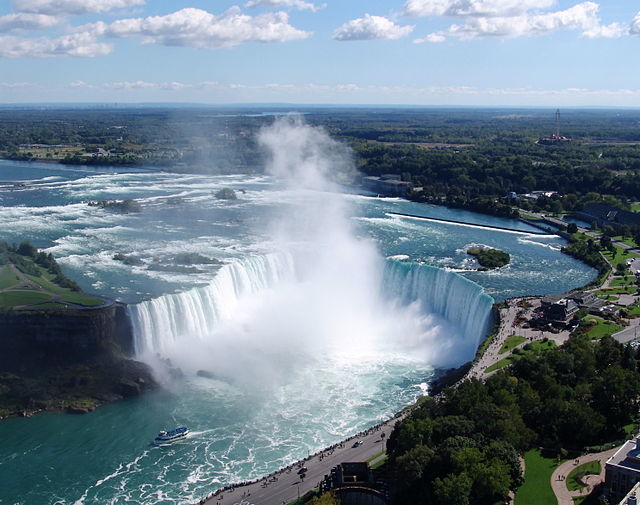 Credit: Helen Filatova Credit: Helen Filatova |
| Niagara Falls |
PLANTS AND FUNGI
PLANTS
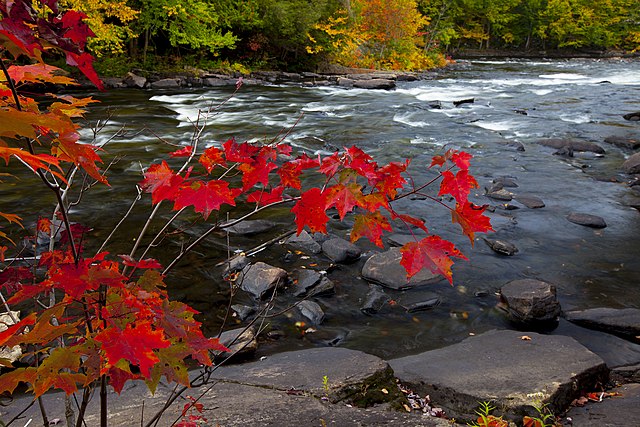 Credit: Robert Berdan Credit: Robert Berdan |
| Maple in the mixed wood forest |
The Mixed Wood Plains are defined by its mixture of trees, both deciduous and coniferous taking advantage of every season. This ecozone is situated at the southernmost tip of Canada, and the warmer weather means that the Mixed Wood Plains has the highest diversity of trees in Canada. The southernmost area of the Mixed Wood Plains meets up with the northernmost reaches of many species of trees. This area is called the Carolinian forests, and includes trees rarely seen anywhere else in Canada such as the Tulip tree, Kentucky Coffee tree and Pawpaw tree.
More frequently seen trees in the southern half of the Mixed Wood Plains include the Sugar Maple, Beech, White Ash, Eastern Hemlock and Eastern White Pine. In the northern half, many of the same trees can be found in addition to Silver and Red Maples, Yellow Birches, Balsam Fir and Black Ash. Some trees specialize in certain environments, with Black Willows a common sight around rivers and Tamaracks and Spruce trees common in bogs. Further up north, along the Niagara escarpment on the Bruce peninsula, some of the oldest trees in Canada can be found. White Cedars grow on the cliffs, and due to the difficult living conditions grow slowly and have a long lifecycle– the oldest known White Cedar lived to be 1890!
Tree compositions are not static and change over time and with pressure from the human component of the landscape. As the most populated ecozone, the Mixed Wood Plains now host a variety of imported plants. The Norway Maple is a popular tree in cities for its bright red leaves in fall and has become lumped in with Canada’s most celebrated tree family – the maple – regardless of its non-native status. Other once populous species have been heavily reduced by invasive diseases and pests. Dutch Elm disease destroyed many elm trees between the 1960s and 1980s, and the Emerald Ash Borer Beetle is now a significant concern for Ash trees. Going further back into history, the once treasured American Chestnut tree was eradicated by a fungal blight in the 1900s, changing Christmas traditions forever.
While trees often get the most attention, they do not make up the ecosystem by themselves. Plant families can broadly be categorized into several groups. The first important group distinction is between flowering plants (angiosperms) and non-flowering plants. Flowering plants (including trees) are evolutionarily the newest and the most diverse set of plants, with over 250,000 distinct species. Due to their high diversity, flowering plants can then be further grouped loosely into grasses, herbaceous plants and shrubs. Older groups of plants found within the mixed wood ecozone include mosses, ferns and conifers.
Mosses and ferns have unique reproduction strategies, producing spores – a much smaller unit then seeds that can be carried by the wind or rain. They can be found in moist and shady areas, often in the understory area of a forest, growing on boulders and alongside cliffs.
Grasses are an often-overlooked group of plants that are essential to many ecosystems for their calorie rich seeds. A significant grass species found in the Mixed Wood Plains is the Manoomin (Ojibwe) or Wild Rice. This species is not directly related to domesticated rice but grows in shallow water in lakes and rivers of the Mixed Wood Plains. Traditionally, it is harvested in canoes by knocking the grain into the canoe with a wooden pole.
Important to many overwintering bird species are shrubs, plants with woody tissues that often carry berries. Shrubs found in the Mixed Wood Plains ecosystem include Dogwood, Staghorn Sumac and Wild Raspberry.
Herbaceous plant is a broad category of plants, without woody tissue like shrubs and trees they die back every year when winter comes. Wildflowers such as Canadian Goldenrod, Asters, Chicory and Milkweed provide nectar and pollen to pollinators in open prairie-like ecosystems.
Ontario’s official flower and emblem is the Trillium, a woodland flower that thrives in shade and flowers in early spring. Other woodland species include Wild Ramp, Trout Lily, violets and Jack’s Pulpit.
Carnivorous plants can be found in specific conditions within the Mixed Wood Plains. These plants trap and digest insects as a source of nutrients to make up for nutrient poor soil. Pitcher Plants, Sundews and Horned Bladderworts can be found in fens, bogs and peatlands.
FUNGI
A good time to find unique fungi is during spring or autumn, after a rainfall. The fungi take advantage of the moist environment to send up fruiting bodies, or mushrooms. Many fungi form associations with trees, trading nutrients for energy from hyphae to root. Other fungi focus more on decomposing the woody tissue of trees, both dead and alive. This is an important ecosystem service that helps recycle nutrients through the ecosystem.
One common type of fungi found in the Mixed Wood Plains is the Turkey Tail. It is a bracket type mushroom, found growing on dead woody tissue. Mycelium are tiny root like structures that live within the wood, consuming it while the mushroom produces spores to disperse.
LICHEN
Lichens are a unique symbiosis of two or more species of fungi and algae acting together to colonize barren surfaces. Lichen can be spotted in all seasons but are particularly vivid splashed against trees during the winter season. Due to their hardy nature, most lichen are not unique to the Mixed Wood Plains but can be spotted across Canada. Common species include the Reindeer Lichen, Sunburst Lichen and Yellow Map Lichen. A locally endangered species called the Golden-eyed Lichen has only one known individual in the Mixed Wood Plains region.
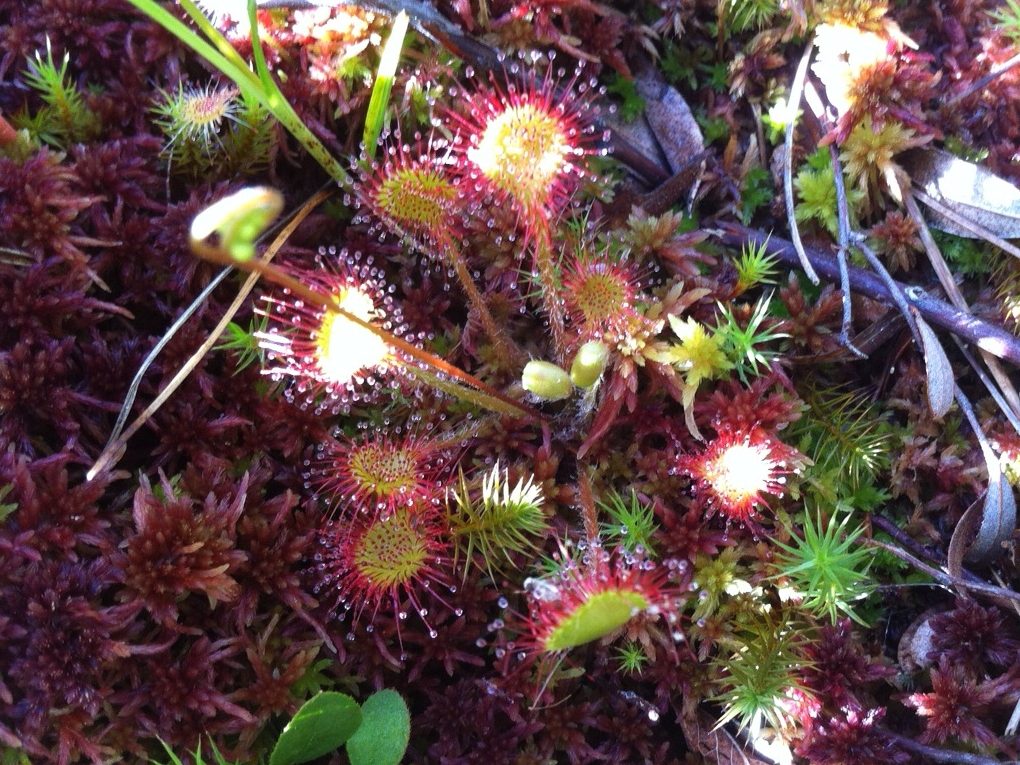 Credit: Annie Langlois Credit: Annie Langlois |
| Round-leaved Sundew |
WILDLIFE
FISH
The diverse range of aquatic ecosystems within the Mixed Wood Plains is home to a diverse range of fish. Within the deep Great Lakes, large fish such as the Lake Sturgeon, White Fish and Lake Trout can be found. In shallower waters, Walleye and Largemouth Bass make their homes.
Traveling from their spawning point in the North Atlantic Ocean, American Eels live in rivers until they mature enough to produce spawn of their own. On the north shores of Lake Erie, the highly endangered Spotted Gar can be found in wetlands. In the many rivers, fish like Trout, Catfish, Perch and Pike can be found. Many of the fish species in this region are threatened by invasive species as well as aquatic barriers like dams and bridges that prevent them from annual migration.
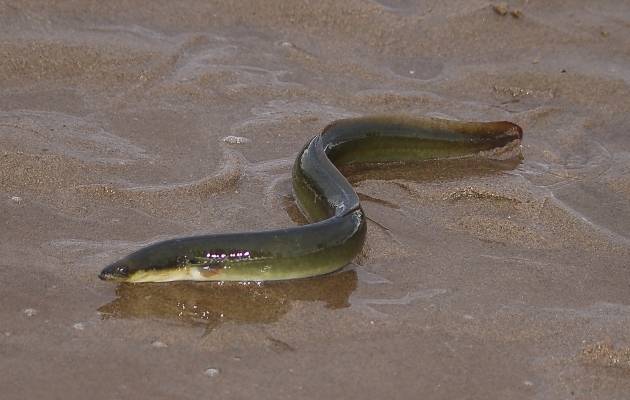 Credit: Parks Canada / Parcs Canada Credit: Parks Canada / Parcs Canada |
| American Eel |
BIRDS
Many birds make use of the mixed plain habitat, both as a stopover point in a migratory journey or year-round. The smallest is the Ruby-throated Hummingbird, the only member of the hummingbird family to come this far north. With iridescent red throat feathers, these small birds visit flowers to eat nectar and aid in pollination before traveling south for the summer.
Some birds prefer to live closer to the ground, like the common Wild Turkey or the endangered Northern Bobwhite quail. Other rare species seek a more specific habitat such as the Piping Plover or Loggerhead Shrike. The Piping Plover is a small shorebird that lays eggs on sand beaches around the Great Lakes. Loggerhead Shrikes are found in alvars and known as butcherbirds for their habit of impaling small mammals on thorny bushes.
Bird feeders are quite common in the heavily populated mixed woods region and attract many different species of birds. Small birds like sparrows, nuthatches, chickadees and finches can be found in abundance around a steady source of food. Larger colourful species like Blue Jays, Northern Cardinals and woodpeckers are also frequent visitors. While there are nine species of woodpecker found in this region, the Downy Woodpecker and Hairy Woodpecker are the most common spotted at birdfeeders. Bright orange Baltimore Orioles can be coaxed down for a visit with a fruit offering.
Many species are better suited to the lake and river habitats across the mixed plains. The iconic Canada Goose is plentiful, along with many species of ducks, such as the Mallard, Wood Duck, and Common Goldeneye. Diving birds like the Common Loon and Cormorants hunt fish in the rivers and lakes. Closer to shore wading birds like the Great Blue Heron, Green Heron and White Egret make use of long legs to wade through shallow water and hunt small fish and frogs.
Bald Eagles are one of the best know raptor birds, for their size and power. Smaller hawks like Shar-shinned Hawk, Coopers Hawk and Red-tailed Hawk can also be found in the Mixed Wood Plains. Ospreys are specialized to hunt fish, diving down to grab fish out of water with powerful talons. Peregrine Falcons and kestrels are both members of the falcon family and have distinct curved bills. While raptor birds hunt by day, owls hunt by night. The Mixed Wood Plain is the northern most range of the striking Barn Owl, and part of the southern range of the popular Snowy Owl. The Great-horned Owl is more common along with the Screech Owl, Barred Owl and Long-eared Owl. Making use of meals left behind, scavenger birds like crows, ravens and Turkey Vultures can often be spotted on the side of the road feasting on roadkill.
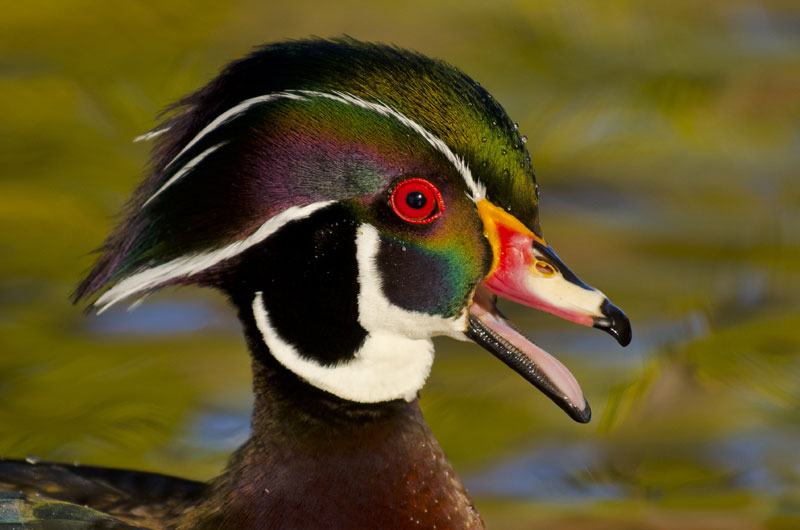 Credit: Simon Bolyn Credit: Simon Bolyn |
| Wood Duck |
MAMMALS
In addition to humans, many different mammal species make the Mixed Wood Plains ecozone their home. White-tailed Deer, Black Bears and Coyotes are the biggest mammals to occupy this range. Moose, Wolves, and even Cougars previously occupied this region, but the urban sprawl and intensive agricultural industry makes it hard for larger species to thrive.
Both the Bobcat and Lynx have potential to be found in this ecozone, but in reality, are quite rare. The Mixed Wood Plains represent the northernmost reach of Bobcat populations and the southernmost reach of the Lynx.
Smaller carnivores like Red Fox and members of the Mustelidae (weasel) family are better suited to support themselves in small pockets of wilderness. Weasel species found in this region include the Ermine, Long-tail Weasel, Least Weasel, American Badger, Mink, and Northern River Otter.
Many of the species known to this region are opportunists, and able to make the best of their new urban environment. Raccoons, Skunks, Cottontail Rabbits, Groundhogs and North America’s only marsupial, the Opossum have been successful at integrating themselves into urban landscapes. In addition to the Groundhog, other large rodents living in the Mixed Wood Plains include the Porcupine, as well as the aquatic Muskrat and nationally beloved Beaver.
Squirrels are an important species in the upkeep of the mixed woods as some portion of their cached seeds will become trees. Eastern Grey Squirrels are the most common (with a very large population of black morphs), but the feisty Red Squirrel and nocturnal Flying Squirrel are also present in this area. A variety of smaller mammals also inhabit the Mixed Wood Plains, including chipmunks, mice, voles, moles, rats and shrews. Eight species of bats are found in the Mixed Wood Plains, using echolocation to hunt insects during twilight.
 Credit: David Cracknell Credit: David Cracknell |
| Coyote |
REPTILES
For reptiles like turtles, snakes and lizards, the Mixed Wood Plains represent their northernmost range, with a few species living in the southern reaches of the boreal forests. To survive the long Canadian winters, reptiles that live in Canada hibernate in winter and find basking spots in the sun during the warm summer.
Turtles are a group of aquatic reptiles with special bony shell to protect them from predators. The Mixed Wood Plains have the highest diversity of freshwater turtles in Canada with eight species. Unfortunately, due to high road mortality and destruction of habitat, sevenout of eight turtles are Endangered or Threatened. Turtles at risk include the Spotted Turtle, Blanding’s Turtle, Eastern Spiny Softshell, Wood Turtle, Musk Turtle, Northern Map Turtle and Snapping Turtle. The Painted Turtle has two subspecies, the Midland and the Western Painted Turtle, and is the most common and least at risk. The Eastern Box Turtle was previously found in this region but has been Extirpated for at least a century. To survive the winter, turtles bury themselves face first into mud at the bottom of rivers and ponds and slow down, breathing very little or not at all for the duration of the winter.
There are 17 species of snakes within the Mixed Wood Plains, with only one venomous snake – the Massasauga Rattlesnake. Previously, the Timber Rattlesnake also inhabited the Mixed Wood Plains, but is now Extirpated. The Blue Racer Snake is only found on Pelee Island. Other species of snake have a much wider distribution, including the Eastern Garter Snake, Northern Ring-Necked Snake, Eastern Milk Snake, Northern Water Snake, Smooth Green Snake, Black Rat Snake, Dekays Brown Snake, and the Northern Red-bellied Snake. Species of snakes at risk in Ontario include the Eastern Hog-nosed Snake, Eastern Fox Snake, Butler’s Garter Snake, Eastern Ribbon Snake, Gray Ratsnake, Lake Erie Water Snake and Queensnake. When the weather starts to get chilly, snakes in the Mixed Wood Plain gather into hibernacula, a small space underground below the frost line. Gathering in large groups to cuddle overwinter provides another benefit in addition to the warmth. Come spring, the gathering is a perfect opportunity to find mates.
Only one species of lizard lives in the Mixed Wood Plains, out of six total species that are native to Canada. The Five-lined Skink is found at the edges of forests and the Carolinian population is considered Endangered.
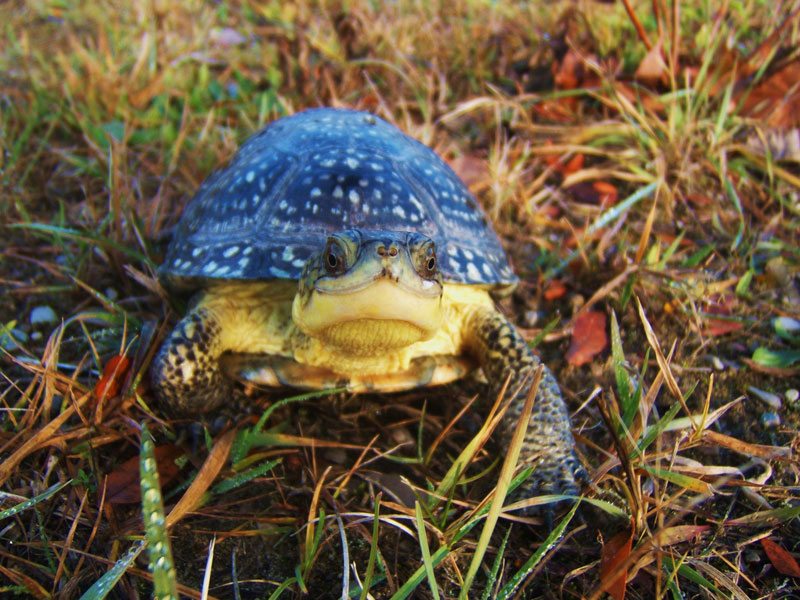 Credit: Jeff Hathaway Credit: Jeff Hathaway |
| Blanding’s Turtle |
AMPHIBIANS
Amphibians are animals that hatch from eggs layed in water, and usually spend their juvenile stage fully aquatic before developing lungs to live on land. In the Mixed Wood Plains, frogs, newts, salamanders and mudpuppies are all resident amphibians
Frogs are a familiar sight around any waterfront, be it a pond, lake or river. The Northern Leopard Frog is one of the most common to be found in the mixed wood plain. The Leopard frog is often confused with the Pickerel Frog which shares the same range and very similar spot pattern.
The largest frog is the impressive American Bullfrog, and the smallest is the tiny Spring Peeper. Clinging to tree branches with sticky toes you might be able to find a Gray Treefrog. Closer to the ground and preferring to lead a less aquatic lifestyle are the American Toad and Fowler’s Toad.
The Wood Frog and Chorus (Both boreal and Western varieties) Frog are both impressive for their ability to survive sub zero temperatures. Rounding out the list of frogs are the Mink and Green Frog, making a total of 12 frogs species found in the Mixed Wood Plains Ecozone.
Salamanders, newts and mudpuppys all look very similar but have some key differences in their life cycle. Salamanders have two stages much like frogs, starting as an aquatic tadpole and becoming a terrestrial adult. Newts have a third stage; wherein adult newts return to water and spend the rest of their life mostly aquatic. Mudpuppies have only a single stage and remain aquatic their entire life. In the Mixed Woods Plains, there are nine different salamander species (four of which are considered Endangered), two newt species and one mudpuppy.
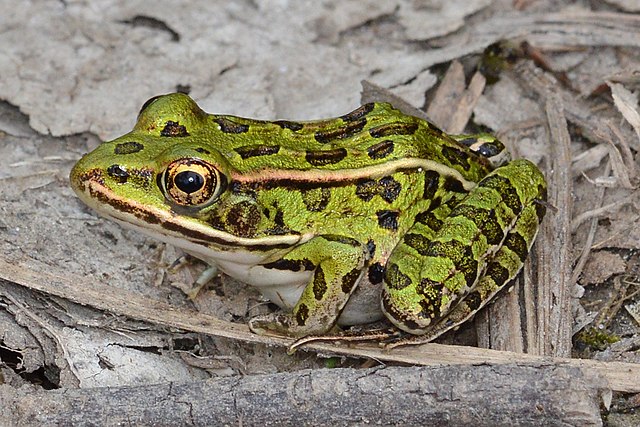 Credit: Ryan Hodnett Credit: Ryan Hodnett |
| Northern Leopard Frog |
INVERTEBRATES
Animals without backbones are known as invertebrates, and the major groups are arthropods (insects, spiders, crabs), mollusks (Snails, clams, and squids), annelids (worms and leeches) and cnidarians (jellyfish and corals).
Arachnids have several subgroups of which spiders are the largest group. The venomous Northern Black Widow Spider has a distinctive red hourglass shape on a black body. Its not quite as deadly as its cinematic partner, only biting when threatened and rarely fatal. Other less venomous spiders found in the region are the Brown Recluse, Yellow Sac and Wolf Spider. The biggest spider in this region is commonly called the Dock Spider, and like its name suggests lives around docks and at waterfronts. It is big enough to hunt small fish it can tangle in its web. While spiders are popular creatures to fear, the greater danger lies with their smaller cousin, the tick. Ticks are very small bloodsuckers that are notorious for spreading diseases like Lyme disease. The changing climate is creating more habitat for ticks to spread and thrive in the mixed forest ecosystem.
More popular insects include the butterflies and fireflies. Fireflies create fantastic light displays while trying to find mates in July. Butterflies like the Monarch Butterfly and Canadian Tiger Swallowtail begin life as caterpillars eating plants but provide a pollination services in the second part of their life by visiting multiple flowers in search of nectar. While not as celebrated as butterflies, moths found in the Mixed Wood Plains like the Luna Moth can be just as stunning as butterflies.
While modern agricultural is dependant on the imported European Honeybee, many native bees exist across North America. Bumblebees win the title of cutest bee, as they are large and fuzzy. Hoary Squash Bees are important for the pollination of native squash plants. The Blue Orchard Mason Bee is a shiny green colour and important early pollinator of fruit trees such as apples, cherries and blueberries.
There are 41 species of freshwater mussel in the rivers and lakes of the Mixed Wood Plains, but they are very vulnerable to ecosystem change. Over 65 per cent of mussels in the Mixed Wood Plains region are Endangered. Mussels have a unique life cycle, forming a parasite relationship with many fish. Mussel larvae is released into the river where it will attach to the gills of fish. When the larvae are old enough, it will detach away from its parent and begin the cycle anew.
 Credit: André Denis Credit: André Denis |
| Monarch Butterfly |
BENEFITS
The Mixed Wood Plains are well known for its productive farmlands. In particular, a region known as the Holland Marsh is known for its rich dark soils where high quality produce can be grown. The Holland Marsh used to be a real wetland, until it was drained and converted into agricultural land in the 1920s. The long growing season and plentiful surface and groundwater create conditions ideal for farming across the Mixed Wood Plains. The long cold winter also provides an advantage, as some crop pests and diseases cannot survive from one growing season to the next.
Many factors have also made the Mixed Wood Plains an ideal place for urban development as well. A moderate climate compared to many other parts of Canada is attractive. Historically, being surrounded by the Great Lakes and St Lawrence River was vital to travel and trade routes. The many rivers and lakes across the interior of the Mixed Forests ecozone also acted as early highways, where transport of goods and people could be arranged much easier than on foot. Proximity to the United States of America is also a factor in the high urban density of the Mixed Wood Plains.
Alongside lakes and waterbodies many recreational activities are popular year-round. Skating, ice fishing, snow shoeing and skiing are all popular winter activities in this region. In the summer, boating, fishing, and swimming opportunities are plentiful.
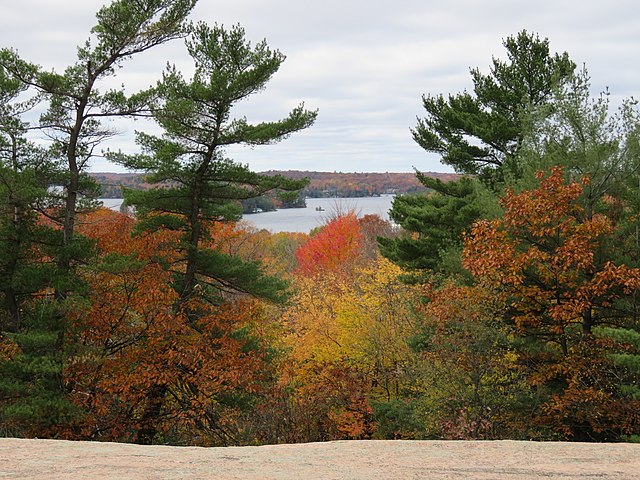 |
| Mixed Wood Forest |
DISTURBANCES AND THREATS
The Mixed Wood Plains Ecozone has a relatively low frequency of natural disturbance compared to its neighbours. The climate is moist enough to avoid fires common in other ecosystems like the boreal forest. Insect outbreaks pose a risk to many plant species, especially invasive ones that do not have a local predator. Ice storms can freeze trees and cause them to explode during winter and spring, but these events are largely beneficial to the ecosystem. Older trees unable to withstand the ice collapse and make room for understory plants to have more light. Tornadoes occasionally touch down in this region, but quite infrequently.
The biggest threats to this ecosystem are human made. Urban and agricultural development both directly removes habitat and fragments the remaining habitat preventing many species from natural foraging or migration events. Roads are a major barrier to species like turtles and snakes that suffer from high roadside mortality rates. Large glass buildings can confuse birds that fly into the reflection of the sky and suffer injuries or death. At night, many bright sources of light can interfere with the migration patterns of migratory birds and outshine the displays of fireflies.
While the Mixed Wood Plains is a diverse ecosystem, it is home to half of all Endangered species in Canada.
While agriculture provides a habitat for some species to survive, it actively destroys others. To protect crops from pests, pesticides are applied. These pesticides are often unspecific, killing beneficial and pest species indiscriminately. Another major issue is the accumulation of fertilizer in waterbodies. The buildup of excessive nutrients in lakes can cause algae blooms- where algae grows at unnatural rates and quantity. Other species living in the waterbody are negatively affected either from toxins in the algae or suffocated from a lack of oxygen.
Invasive species are a major concern in the Mixed Wood Plain. The European Common Reed can choke waterbodies and make it difficult for turtles to navigate through ponds. The Giant Hogweed is incredibly toxic and can cause rashes to appear very quickly after it is touched. Zebra
Mussels are now a common problem in the Great Lakes, causing infrastructure issues when they build up in pipes. Invasive fish species like Asian Carp and Round Goby can disrupt local biodiversity in the Great Lakes by competing for resources or by directly consuming the eggs of their competitors. Domestic cats are also invasive to this ecosystem and are highly successful predators of small birds and mammals.
ACTIONS
Many organizations are working to conserve the natural places that remain within the Mixed Wood Plains. In addition to provincial parks, the provincial government also protects lands in conservation reserves, protected areas and wilderness areas. In Ontario, conservation authorities exist for each watershed and work towards shared conservation goals with municipalities and landowners. Environmental organizations and land trusts also conduct conservation activities across the mixed wood plains.
On an individual level, many people are taking action to support biodiversity and protect wild spaces. Planting native species in gardens can help to support native pollinators, increasing their effective habitat range. Engagement with programs like iNaturalist or eBird are becoming increasingly popular. These apps use crowdsourced data to identify and log observations of species for scientific research. Many efforts are underway to limit the impact of invasive species, with volunteer supported invasive plant removals happening annually.
A great way to promote the conservation of the Mixed Wood Plains is by supporting a local conservation area or trail.
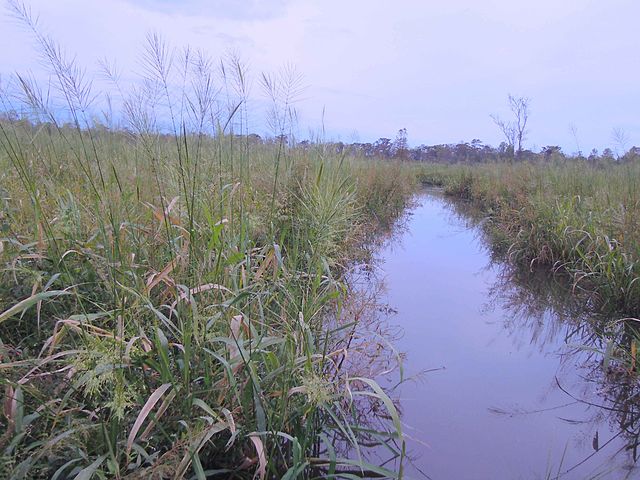 |
| Wild Rice Field |
Written by: Lindsey Greidanus, Canadian Wildlife Federation, 2021



